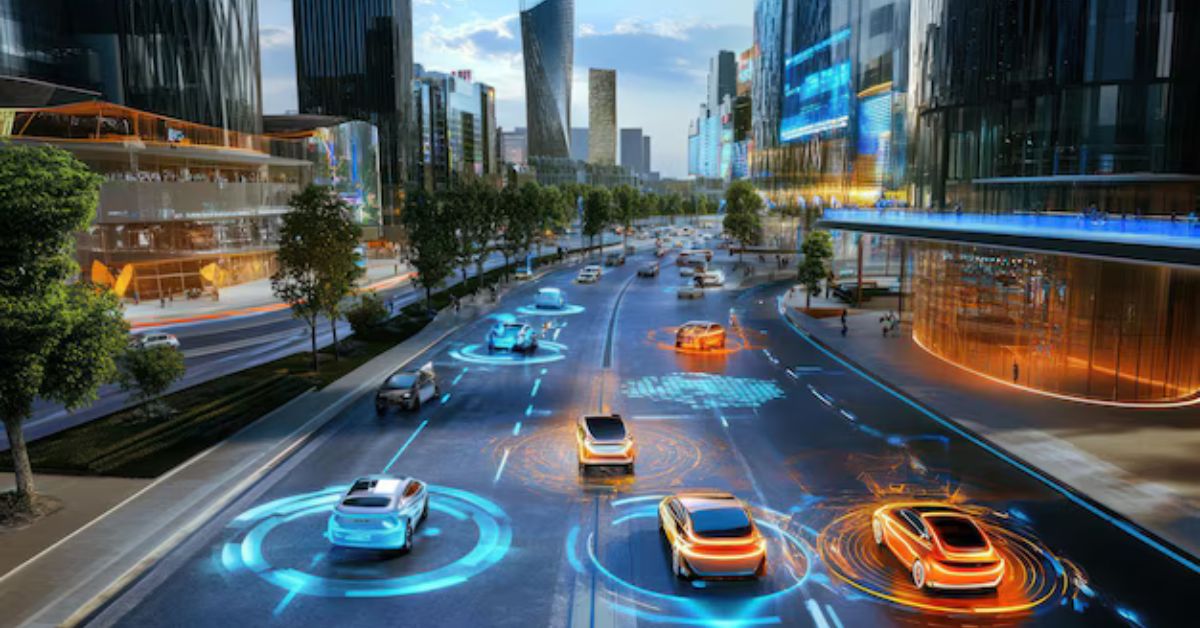The ADAS & Autonomous Vehicle Technology Expo is a premier event that brings together industry leaders, innovators, and enthusiasts from around the globe. This expo is dedicated to showcasing the latest advancements in Advanced Driver Assistance Systems (ADAS) and autonomous vehicle technology. With the automotive industry undergoing a rapid transformation towards automation and smarter vehicles, the ADAS & Autonomous Vehicle Technology Expo plays a crucial role in shaping the future of transportation. This article will provide an in-depth exploration of the event, its significance, and the cutting-edge technologies that drive the industry forward.
What Is ADAS and Autonomous Vehicle Technology?
ADAS stands for Advanced Driver Assistance Systems, a set of technologies designed to assist drivers in making safe decisions, reducing the likelihood of human error, and ultimately enhancing the driving experience. These systems include features like lane departure warnings, adaptive cruise control, automatic emergency braking, and parking assistance. While ADAS represents the present stage of vehicular automation, autonomous vehicles aim to take things a step further by eliminating the need for human intervention entirely.
Autonomous vehicle technology encompasses everything required to create self-driving cars, from sensors and cameras to machine learning algorithms and real-time data analysis. The ultimate goal of this technology is to achieve full automation, where vehicles can navigate, make decisions, and transport passengers or goods without any human control.
Importance of the ADAS & Autonomous Vehicle Technology Expo
The ADAS & Autonomous Vehicle Technology Expo is more than just a trade show; it is a critical platform for networking, collaboration, and knowledge sharing. As the automotive industry shifts towards automation and electrification, this expo plays a pivotal role in shaping the industry’s trajectory. It brings together key players, including vehicle manufacturers, technology developers, research institutions, and regulatory bodies, to exchange ideas and explore solutions for the challenges the industry faces.
- Industry Collaboration: The expo facilitates partnerships between automotive companies, tech firms, and startups. This collaboration accelerates the development of new technologies and fosters innovation across the industry.
- Knowledge Sharing: The expo provides a platform for industry experts to share their insights on the latest trends, research findings, and regulatory developments. This exchange of knowledge ensures that all participants stay up to date on the advancements driving the industry forward.
- Showcasing Innovation: The event is a launchpad for groundbreaking technologies and products. Attendees have the opportunity to witness first-hand the latest advancements in autonomous driving, sensor technology, and machine learning, among others.
Key Technologies Showcased at the Expo
The ADAS & Autonomous Vehicle Technology Expo highlights a wide range of technologies that are instrumental in the development of autonomous vehicles and driver assistance systems. Some of the key technologies featured include:
1. Sensors and Cameras
Sensors and cameras are essential components of both ADAS and autonomous vehicles. These technologies enable vehicles to perceive their surroundings, detect obstacles, and make real-time decisions based on the environment.
- LIDAR: Light Detection and Ranging (LIDAR) technology uses lasers to measure distances and create detailed 3D maps of the environment. LIDAR is crucial for enabling vehicles to “see” and navigate through complex environments, making it a fundamental tool in autonomous driving.
- Radar: Radar systems use radio waves to detect the speed and distance of objects around the vehicle. These systems are commonly used in ADAS features such as adaptive cruise control and collision detection.
- Cameras: High-definition cameras provide visual data that the vehicle’s onboard computer can analyze. Cameras are critical for object recognition, lane tracking, and reading road signs, all of which are essential for both ADAS and fully autonomous driving.
2. Artificial Intelligence and Machine Learning
Artificial intelligence (AI) and machine learning are at the heart of autonomous vehicle technology. These systems allow vehicles to process vast amounts of data from sensors, cameras, and other sources, enabling them to make intelligent decisions on the road.
- Data Processing: Autonomous vehicles rely on AI algorithms to process real-time data from multiple sources, such as LIDAR, radar, and GPS. This data processing is essential for tasks such as object detection, route planning, and obstacle avoidance.
- Decision Making: AI systems in autonomous vehicles use machine learning to continuously improve their decision-making capabilities. By learning from past experiences and real-time data, autonomous vehicles can make safer and more efficient decisions, even in complex driving scenarios.
3. Connectivity and V2X Communication
Vehicle-to-Everything (V2X) communication is another critical component of autonomous driving. V2X enables vehicles to communicate with other vehicles, infrastructure, and even pedestrians, creating a connected ecosystem that enhances safety and efficiency on the roads.
- Vehicle-to-Vehicle (V2V) Communication: V2V communication allows vehicles to exchange information about their speed, location, and direction, helping to prevent collisions and improve traffic flow.
- Vehicle-to-Infrastructure (V2I) Communication: V2I communication enables vehicles to interact with traffic signals, road signs, and other infrastructure, improving navigation and reducing congestion.
- Vehicle-to-Pedestrian (V2P) Communication: V2P communication enhances safety by allowing vehicles to detect and communicate with pedestrians, reducing the risk of accidents in urban environments.
Benefits of ADAS and Autonomous Vehicles
The development and deployment of ADAS and autonomous vehicle technologies offer numerous benefits, ranging from increased road safety to enhanced convenience for drivers and passengers.
- Improved Safety: One of the primary benefits of ADAS and autonomous vehicles is their potential to improve road safety by reducing human error. Features like automatic emergency braking, lane-keeping assistance, and adaptive cruise control help prevent accidents by intervening when a driver is distracted or unable to react in time.
- Reduced Traffic Congestion: Autonomous vehicles have the potential to reduce traffic congestion by optimizing route planning and improving traffic flow. With V2X communication, autonomous vehicles can work together to avoid bottlenecks and maintain smoother traffic patterns.
- Increased Accessibility: Autonomous vehicles hold promise for increased accessibility, particularly for people with disabilities or those who are unable to drive. By eliminating the need for human intervention, self-driving cars can provide transportation solutions for a broader range of people.
- Environmental Benefits: Many autonomous vehicles are being developed with electric powertrains, reducing their environmental impact compared to traditional internal combustion engine vehicles. Autonomous vehicles can also optimize energy usage by driving more efficiently, further reducing emissions.
Challenges Facing the Industry
Despite the numerous benefits of ADAS and autonomous vehicle technologies, several challenges must be overcome before widespread adoption can occur.
- Regulatory Hurdles: One of the biggest challenges facing the autonomous vehicle industry is the lack of clear regulations governing their use. Governments around the world are working to develop frameworks for testing and deploying autonomous vehicles, but progress has been slow.
- Technological Limitations: While significant advancements have been made, fully autonomous vehicles still face technical challenges, such as navigating complex urban environments and handling adverse weather conditions.
- Public Acceptance: Many people remain skeptical of autonomous vehicles due to concerns about safety and reliability. Building public trust in these technologies will be essential for widespread adoption.
Conclusion
The ADAS & Autonomous Vehicle Technology Expo is an essential event for anyone interested in the future of transportation. By showcasing the latest advancements in sensors, AI, machine learning, and V2X communication, the expo provides a glimpse into the cutting-edge technologies that are shaping the automotive industry. While challenges remain, the potential benefits of ADAS and autonomous vehicles are undeniable, from improved road safety to reduced traffic congestion and environmental impact. As the industry continues to evolve, events like this expo will play a crucial role in driving innovation and collaboration forward.










